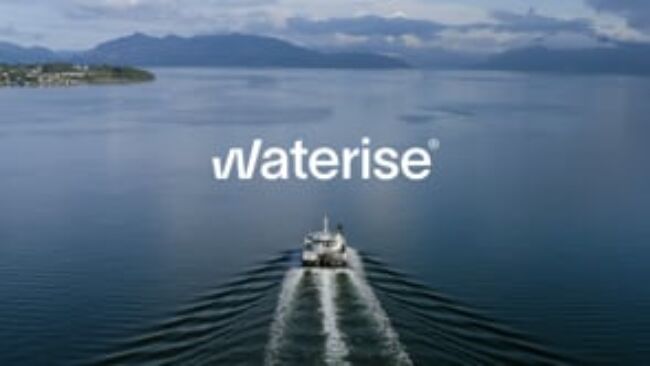Waterise utilises proven subsea technology combined with membrane desalination to provide safe and clean access to fresh water in water-stressed regions around the world.

Facts about desalination
Desalination removes salt from seawater to produce fresh water for municipal, agricultural or industrial use. The world’s oceans contain over 97 per cent of the planet’s water resources, providing an essentially unlimited raw material for seawater desalination.
Facts about reverse osmosis
Waterise utilises proven subsea technology combined with reverse osmosis (RO) to produce fresh water.
Osmosis: Water naturally flows over a semi-permeable membrane to an area with a greater concentration of ions.
Osmotic pressure: Water pressure due to the presence of salinity. Osmotic Pressure increases with differences in salinity.
Reverse osmosis employs mechanical pressure to “reverse” the natural osmotic pressure and semi-permeable membranes to separate saline water into two streams: a high quality permeate stream (i.e. the fresh water) and a concentrated “reject” stream (i.e. brine or discharge).
Seawater reverse osmosis (SWRO) is used globally to produce close to 25 million cubic metres of fresh water per day. Reverse osmosis will be the fastest growing technology for seawater desalination in the years to come.
Traditional land-based SWRO is often criticised for its energy intensity. This stems from the need for pre-membrane pumping pressure to overcome the osmotic pressure. It is also criticised for the potential impact on marine life around the intake and discharge areas.
Waterise: Subsea desalination
Waterise solutions represent a completely new approach to desalination. Our subsea desalination system combines existing reverse osmosis technology with established subsea technology and off-the-shelf equipment from leading Norwegian subsea suppliers.
Our solutions consist of standardised subsea modules with a capacity of 50,000 m3 per day. Economies of scale can be achieved with the deployment of multiple modules at same site for larger capacities to meet customers’ needs and requirements over time – and at any time.
Waterise introduces unique features from the subsea oil industry to improve the safety and efficiency of desalination.
- Extremely high reliability – based on simplicity and automation
- Fully automated and unmanned remote plant operations
- Modularity improves capacity utilisation
Costs of desalination typically depend on the choice of technology and plant size as well as location-specific factors such as the cost of purchasing land, feed-water quality and pre-treatment needs, environmental impacts and regulations, and energy availability.
Waterise subsea desalination system is a game changer:
- Waterise utilises the hydrostatic pressure to run the reverse osmosis process, thereby reducing energy requirements by 50 per cent.
- Subsea operations dramatically reduce the costal land required compared to a traditional land-based desalination plan.
- Deep sea water has much lower organic content and more stable operational properties throughout seasons than surface water. As a result, feed-water to a subsea plant requires significantly lower pre-treatment than a land-based facility.
- Subsea desalination significantly reduces the environmental footprint and emissions by eliminating the discharge of concentrated brine into coastal waters.
Our business model
Waterise adapts its business model to customer requirements. We typically offer our customers a Build-Own-Operate (BOO) model, where we finance the desalination facility, build the plant, provide oversight and monitoring of project execution, optimise lifecycle costs, operate and maintain the plant, and ultimately deliver desalinated water to our customers under a long-term contract.

